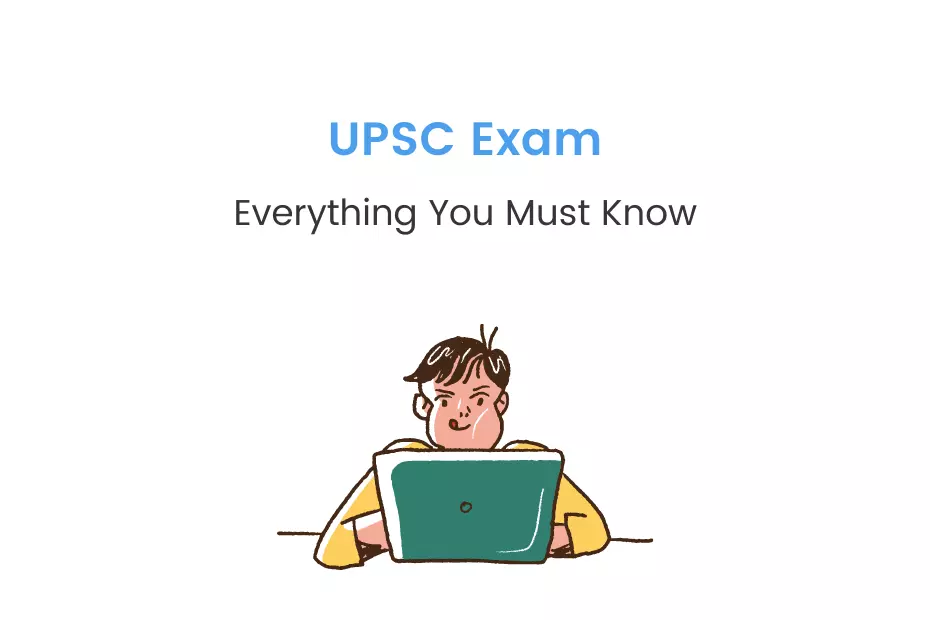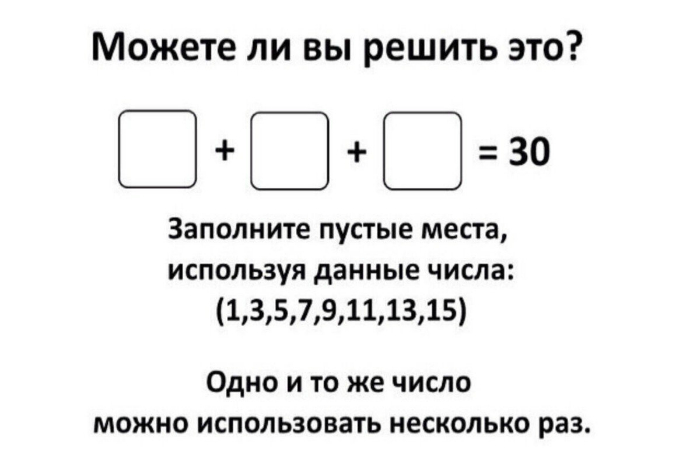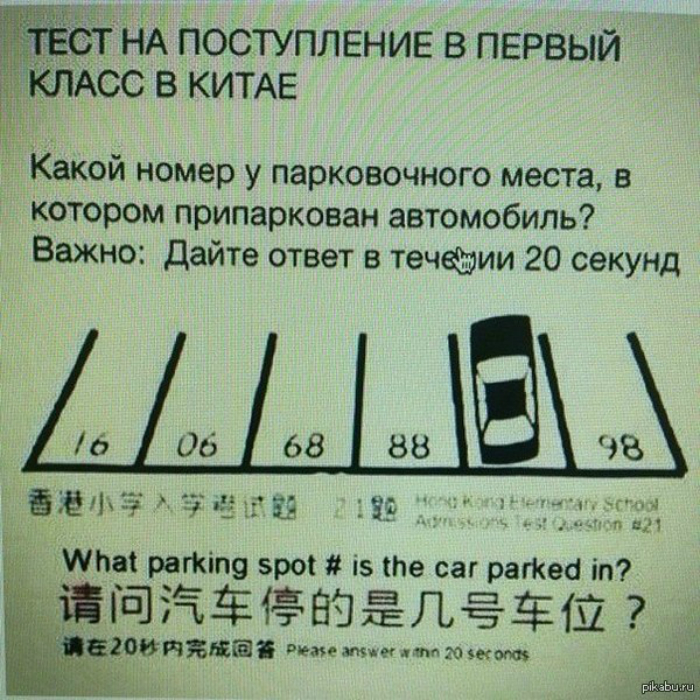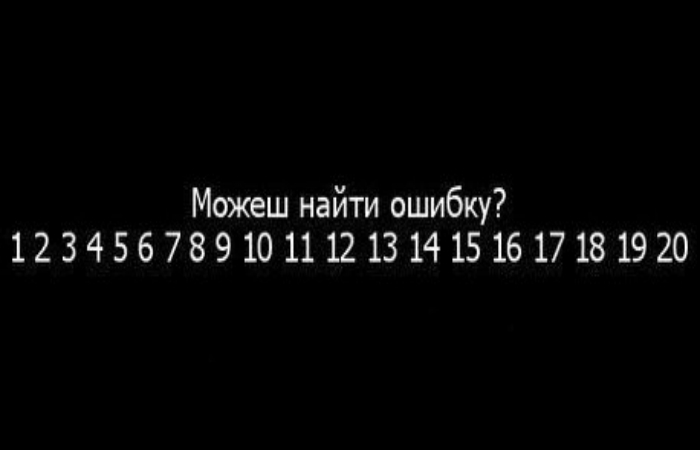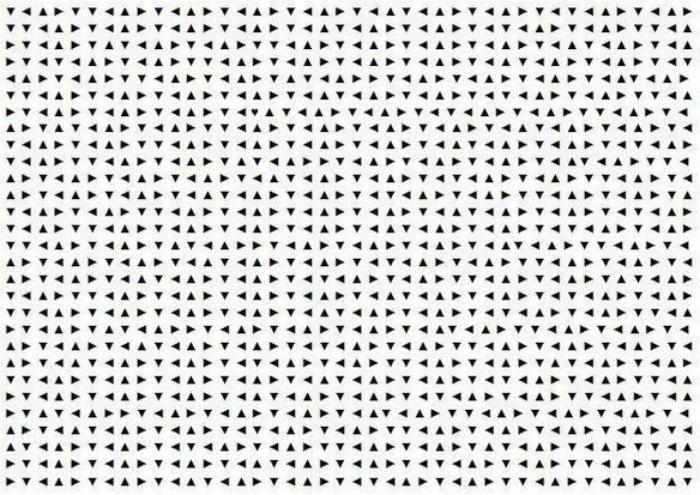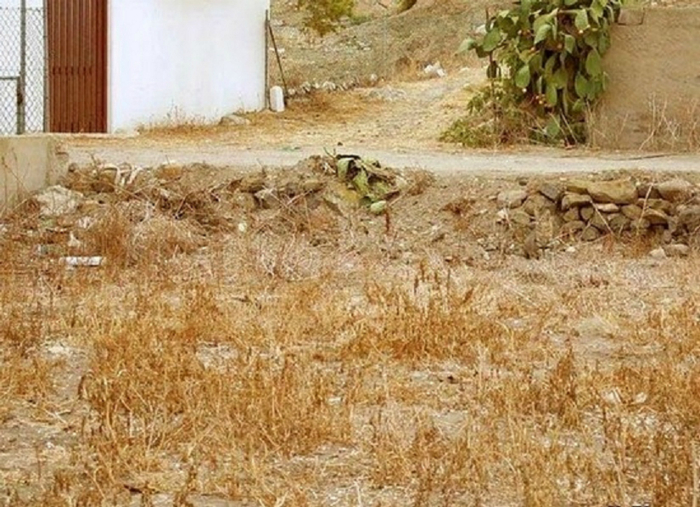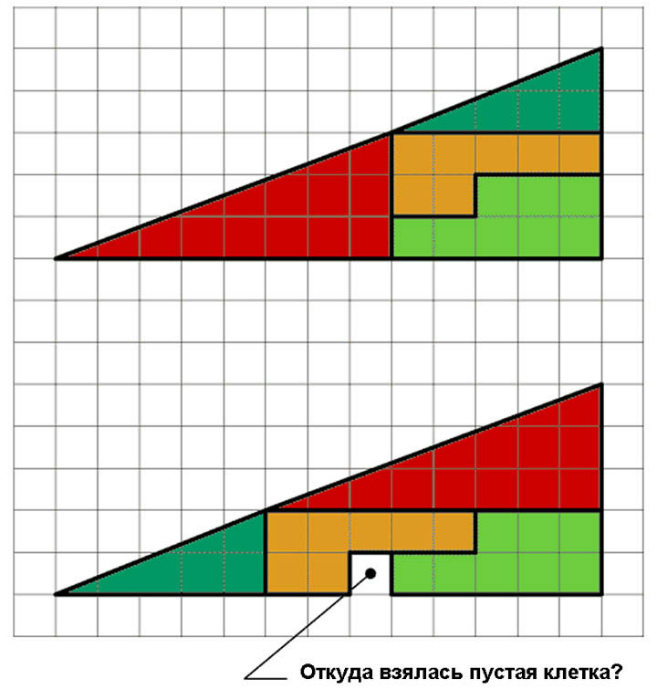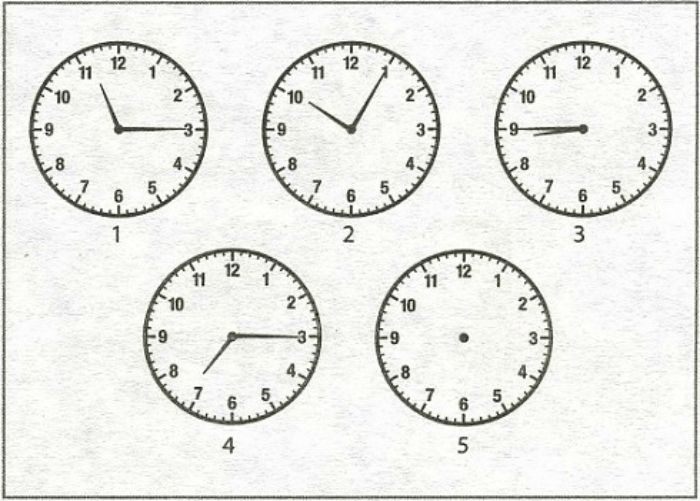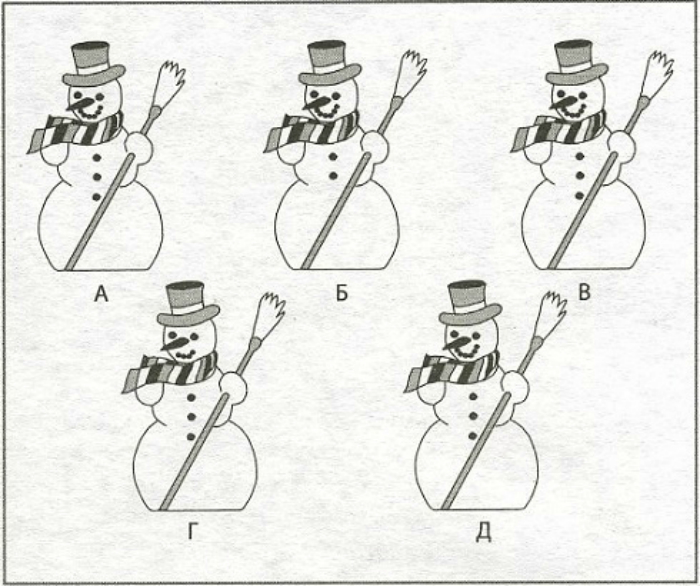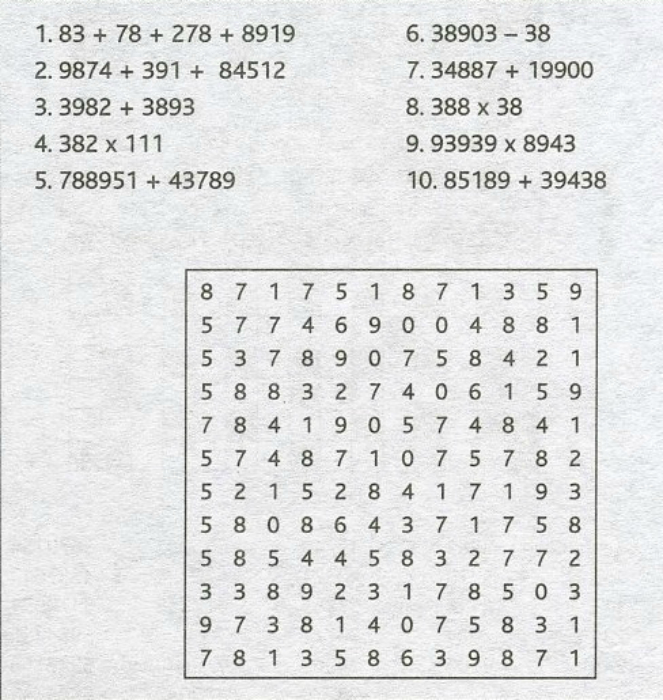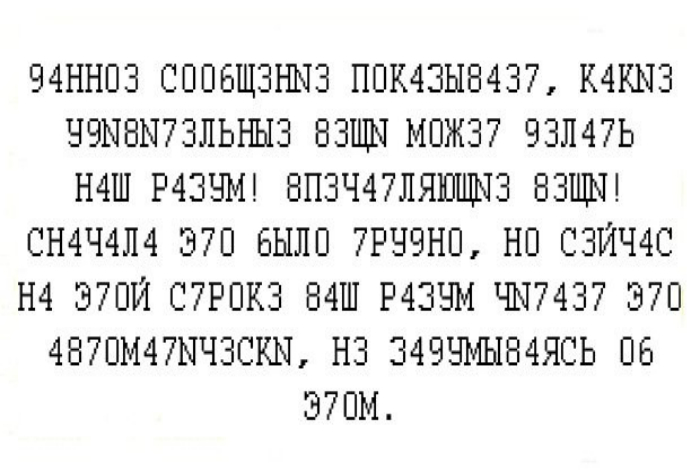В Фейсбуке наткнулся на перепост одной логической задачи и завис на ней на час. Не столько бился над ее решением, сколько изучал реакцию пользователей. Потому что оказалось, что это очень неплохой кейс для понимания того, как работают искажения и манипуляции, а также почему понятие релевантности – основное универсальное понятие в SEO 
Суть задачи 1 3 5 7 9 11 простая: вписать в пустые квадраты указанные числа, чтобы соблюсти равенство. Но это только кажется простым.
Как написано на скриншоте, в 2013 году эту задачу решил только один человек. Возможно, это не так, поскольку в индийской программе тестирования UPSC действительно был только один победитель, как пишут по ссылке.
Расшифровывается эта программа как Union Public Service Commission – это весьма критичный в Индии экзамен для профессиональной карьеры.
Однако, сдали финальный экзамен 3003 человека, третья часть из них прошла дополнительный персональный тест, ну а с первого раза набрали максимум сразу пятеро (а еще были вторые, третьи и четвертые попытки). То есть на скриншоте скорее всего написано неверное толкование о человеке, решившем эту задачу. Ладно, наверно это несущественно, давайте про саму задачу UPSC поговорим…
Тут, конечно, тоже упс небольшой, потому что в pdf-файлах тестирования и ответах на тесты за 2013 год этой задачи не находится (правда, я лично искал недолго, терпения не хватило). Но будем считать тоже, что она все-таки была.
Цитируют задачу UPSC также и на английском языке – споры о решении там тоже нешуточные разгораются. Чаще всего в качестве правильного ответа указывают что-то подобное – но не спешите, откройте чуть позже, там все равно немного другая версия задачи)) И, как сказал один товарищ, “то, что страница на английском, не делает информацию достоверной”.
А я лично, глядя на попытки решения на нескольких форумах, составил вот такую небольшую классификацию вариантов ответов – получилось 9+3 штук. Большая часть из которых абсолютно неверные искажения, но они повторялись и повторялись массово под разными соусами. Почему?
Потому что “для одной задачи всегда будет множество решений”, скажет кто-то.
И будет прав?
Вариант решения первый, самый очевидный
Попробуем методом перебора сложить цифры. Но тут ничего не получается – сумма трех нечетных ни в одном из вариантов не дает четное. Что делать?
Ответы на задачу 1 3 5 7 9 11 13 15 равно 30
Далее варианты скрываю под спойлером, если хотите подумать еще немного сами:)
Почитать еще: Как Цой проиграл Мисс Кэти. И почему новая волна блогеров – сила
Скрытый текст — нажмите для просмотра вариантов
Вариант решения 2: составить новые сущности из уже существующих (заменить стариков молодыми:)
А давайте просто исходить из того, что число – понятие гибкое, и мы можем взять как число что-то после запятой. Составить новое число из существующих с помощью каких-то операций. Например, было в условии 3, а мы возьмем 3,5 – они ведь стоят рядом, но нигде не сказано, что этого делать нельзя. Решение тогда на поверхности:
- 7,9+9,1+13 = 30
- 1+1,3+5,7+7+15=30
В маркетинге это называют элементом стратегии дифференциации при создании новой категории как УТП 
Вопрос в связи с этим простой: почему кто-то решил, что допускается взять 9,1 вместо 9,11? Ведь рядом стоят именно 7,9 и 9,11. Какое-то избирательное право получается) И если задача из теста UPSC-2013 заключалась в том, чтобы обмануть пользователя, замаскировав дробные числа под запятыми – это не задача на математику, не задача на сообразительность, а просто чушь.
В задачи национального теста не вводятся сознательные искажения с целью обмануть пользователя – хотя бы потому, что в реальной жизни мошенничество наказывается по закону:)
Если же реально решение подразумевало дробные числа, то условие некорректно, потому что 7,9 – это ОДНО число, а не “два числа через запятую” (или “два числа через точку”). Тогда мы снова приходим к тому, что задача поставлена неверно и пользователей хотят обмануть… И еще, тест ведь изначально был на английском языке, а в английском для чисел вообще-то используют не запятые, а точки. Поэтому такое использование запятых в этом решении – явно незаконная манипуляция, искажающая условие в пользу решающего, но не воспроизводящая релевантный процесс.
Вариант решения 2.1: найти мнимую сущность
К чему еще ищущий решение человек может придраться в условии задачи, чтобы найти “правильный” ответ? Например, к тому, что все числа не имеют между собой пробелов. Уау!
“А почему вы делите числа ровно по запятой? Все числа не имеют между собой пробелов. Это что говорит? Что я могу их брать из всего ряда и делить сам”.
Или:
“В условии явная ошибка, после запятых нет пробелов, это лазейка для любого подтасованного решения”.
По факту такие объяснения – это оправдание наличием мнимой сущности (т.е. не мы создали искажение, а кто-то другой это сделал сознательно). Ведь отсутствие пробелов понимается как нарушение стандарта, т.е. каких-то договоренностей, соблюдаемых всеми сторонами для обеспечения понимания, т.е. создания релевантности. Но это притянуто за уши – ведь ряд чисел здесь длинный, и пробел – это абсолютно незначительная категория, сути она не меняет. Почему бы не убрать тогда запятые вообще и не выхватывать любые подходящие числа?
Поэтому очень понятным становится возмущение профессионального математика, который просто приходит в небольшой шок от такого допущения:)
“Я извиняюсь, а вы в школе систему записи чисел арабскими цифрами проходили? Есть же какие-то конвенции, в конце концов! В любой нормальной задаче, если вас просят что-то сделать, используя числа 12, 15 и 23 это не значит, что вы можете использовать числа 2 и 3 только потому, что вам захотелось разделить 23”
Ну, потому что это факт, это договоренность о стандартах, а кто-то их хочет нарушить и использовать по своему усмотрению.
Проблема с нашей задачей в том, что в условии сказано использовать данные числа, а не составить из данных чисел новые.
Вариант решения 3: создать новые отношения
Другие варианты из того же разряда – это ввести в использование дополнительные знаки и операции. Например, вставить в пустые квадраты плюс, минус, скобки, корень, дроби, умножение, деление, степени, факториал, и т.д., и т.п. То есть создать какие-то новые отношения, исходя из своего опыта и контекста. Например:
- 15+5+(11-1)=30
- sqrt(9)+13+15=30
- 15+15-30=0
Еще более крутое, но в то же время элегантное искажение:
- 1+1+1=3,0
Здесь мы видим не только добавление новой сущности, но и сознательное изменение условия задачи, т.е. изменение результата, для которого мы ищем наиболее релевантный процесс! А что: изменили результат и создали новый процесс, и добились результата! Ничего не напоминает? Такой метод очень часто использует пропаганда…
[adguru adid=”3″]
Вариант решения 4: изменяем систему
Еще один умный и распространенный вариант – изменить систему счисления (хотя нам и не сказано, что это можно сделать, как и п.2). Но зато результаты достигаются легко и довольно быстро:
- в 2-ичной системе 30 – 11110, а 15 – 1111 (2 раза по 11) – может быть, в задачке экзамена UPSC намек на двоичную систему счисления?
Как пошутил один пользователь, “все люди делятся на 10 типов: те, кто знает, что такое двоичная система счисления, и те, кто не знает”.
- или в 5-ричной системе: 13+11+1=30
- или в 11-ричной системе: 15(16)+11(12)+5(5) =30(33)
- или в 15-ричной системе: 15+13+7=30
- или в 17-ричной системе: 15+15+7=30
О проблеме такого подхода в следующем пункте. И кстати, почему тогда заявляется, что так мало людей решили эту задачу в Индии на тестировании, если на форумах это одно из самых распространенных решений?))
Вариант решения 4.1: изменяем элементы системы
Некоторые идут еще дальше. Ведь можно не менять систему счисления, а лишь одно число перевести в другую систему. Скажем, приравнять одиннадцать к двум:
- 13+15+(11=2)=30
В жизни так часто и происходит: вроде бы все об одном, но каждый говорит на своем языке))) И вообще, кто сказал, что равенство должно оказаться верным?
Бред, конечно, но люди пишут об этом на полном серьезе. Интересно, в магазине они тоже подбирают новую систему счисления на кассе перед оплатой?))
Очевидно, что и процесс, и результат получаются в таком случае абсолютно нерелевантны.
Вам ничего это не напоминает? Из области seo мне лично приходят на ум блоги начинающих сеошников – ну просто абсолютные параллели))))
Вариант решения 4.2: изменить смысл элемента
Здесь все видно на скриншоте – кто-то даже не поленился нарисовать процесс в динамике, это так умиляет! Просто начинаешь представлять себе, как это непослушное число само кувыркается и приобретает нужную нам форму!..
Или как вариант давайте считать, что:
- 11 – это просто римское 2. А что?
Вариант решения 5: “я не такая, я жду трамвая”
Тут сразу несколько вариантов, которые можно описать как “наивно супер” или “сделаем вид, что не заметили”. Например:
- оставить 1 поле пустым – но ведь в условии сказано заполнить поля тем, что есть!
- ввести в одно поле 0 – но ведь в условии не сказано, что можно разбивать числа, числа идут через запятую;
- создать в уме пустой квадрат за границами задачи – ведь в условии написано “заполните пустые места”, а как бы про “пустые квадраты” ничего не сказано, поэтому после числа “30” довольно таки пусто! Вот и результат: 15+15+15=30+15
Вариант решения 6: украсть чужую сущность
Кстати, а ведь можно тогда для решения взять 0 из 30!
- 15+15+0=30
Или посчитать, что “0” – это ваще ничего, поэтому его можно пристраивать куда угодно, например, просто добавить его к единице:
- 10+10+10=30
[adguru adid=”3″]
Вариант решения 7: уплотнить сущности
Ну, то есть вписать 2 или больше чисел в клетку – на самом деле не сказано, что нельзя это сделать. Вот только не помогает, похоже – решений с таким подходом не находится. По факту этот вариант ближе к решению из пункта 2, т.к. тоже пытается создать новую сущность из уже существующих.
Вариант решения 8: изменить масштаб
Мне лично этот вариант очень нравится. Но работать он будет только в контексте, и это становится абсолютно не математической задачей! 
- 1 сутки + 5 часов + 1 час = 30 часов
- аналогично можно перевести в сантиметры
- или “взять 1 год до нашей эры, прибавить 15 лет, и еще 15 лет – получится 30 год нашей эры”
- и т.п.
Вариант решения 9: отказаться от решения
Ведь в задаче спрашивают “можете ли” – не проще ли ответить “не можем, потому что сложение 3 нечетных чисел не может в сумме дать четное”? Ну ок, не сдали тест?))
Но смысл в этом ответе есть и очень серьезный. Ведь на самом деле к этой задаче огромный интерес, я нашел больше 170 сообщений с разными вариантами решений только на одном форуме! Как написал один из пользователей “я думаю, так же ее решил и победитель, а вы хорошо продемонстрировали, почему все остальные с ней не справились – вы ищете лишние сущности там, где их нет.”
Может быть, это действительно задачка для тех, кому работать лень? А мы всего лишь наблюдаем проявления психологического феномена – человеческий мозг ЛЮБИТ искать и находить категории и создавать новые сущности даже там, где их нет и не может быть?
Или все-таки правда в том, что “для одной задачи всегда будет множество решений”?
- Человек действительно любит искать и находить категории.
- Для одной задачи действительно МОЖЕТ БЫТЬ несколько решений.
- Вот только всем давно пора понять: это не дает никаких гарантий, что БУДЕТ несколько правильных решений – вы их можете просто не найти.
- Это даже не дает гарантий, что БУДЕТ ХОТЯ БЫ ОДНО ПРАВИЛЬНОЕ РЕШЕНИЕ – потому что его в принципе может и не быть (в данный момент)…
- А вот гарантии появления искажений – осознанных и не очень – можно дать почти всегда! Это универсальный закон роста сущностей.
Небольшое следствие: модератором в таком случае каждому приходиться быть самому – ответственность всегда личная, хотите вы этого или нет.
- Значит ли это, что нужно стремиться самому создавать искаженные сущности? Нет конечно.
- Значит ли это, что искать лучший вариант в принципе не требуется? Нет конечно. Разве я такое говорил?:)
А теперь не хотите рассказать мне, какое решение этой задачи выбрали вы?
Обновление-1:
Кстати, выводы простые еще:
- нужно обращать внимание на искажение условия (предпосылок)
- нужно уметь отбрасывать искажения (и переформулировать условие)
- нужно не останавливаться на достигнутом ошибочном варианте
- нужно учиться признавать ошибки и свою ограниченность
Обновление-2:
для этой псевдо-задачи придумали новую упаковку – теперь ее называют “задача с шарами“. Но народу все равно – дофамин не остановить

From Wikipedia, the free encyclopedia
| Acronym |
|
|---|---|
| Type | Paper-based test |
| Developer / administrator | Union Public Service Commission |
| Knowledge / skills tested | Writing, English, General knowledge, others |
| Purpose | Selection of candidates to the various posts of Civil Services of India |
| Year started | 1922 (101 years ago)[1] |
| Duration | 2 hours/paper (Prelims) 3 hours/paper (Mains) 1 Variable duration of personality test |
| Score / grade range | 0 — 200 (Prelims)[a] 0 — 1750 (Mains) 0 — 275 (Interview) Total: 2025 ( Mains + Interview) |
| Offered | Once a year |
| Restrictions on attempts | 6 (General) 9 (OBC & PwBD- General) no limits for SC & ST candidates |
| Countries / regions | India |
| Languages | Question paper is only given in Hindi or English. Answers can be given in any one of the scheduled languages of India |
| Annual number of test takers | 10,40,060 Applicants (2020) 4,82,770 Appeared in Prelims (2020)[2] |
| Prerequisites / eligibility criteria | Must be a graduate, and an Indian citizen.[b] |
| Fee | ₹ 100/- (for general male candidates). For other categories of candidates, the registration fee is exempted. |
| Scores / grades used by | Union Public Service Commission for the selection of the students to the various Civil Services of India |
| Qualification rate |
[3] |
| Website |
|
The Civil Services Examination (CSE) is a national competitive examination in India conducted by the Union Public Service Commission for recruitment to higher Civil Services of the Government of India, including the Indian Administrative Service, Indian Foreign Service, and Indian Police Service. It is also colloquially referred to as the UPSC examination, and UPSC CSE. [4] and is conducted in three phases: a preliminary examination consisting of two objective-type papers (Paper I consisting of General Studies and Paper II, referred to as the Civil Service Aptitude Test or CSAT), and a main examination consisting of nine papers of conventional (essay) type, in which two papers are qualifying and only marks of seven are counted; finally followed by a personality test (interview).[4][5] A successful candidate sits for 32 hours of examination during the complete process spanning around one year.
Process[edit]
The Civil Services Examination is based on the British era Imperial Civil Service tests, as well as the civil service tests conducted by old Indian empires such as the Mauryan Empire and Mughal Empire. It is one of the most difficult competitive examinations in India. A single attempt can take two complete years of preparation — one year before the prelims and one year from prelims to interview. On average, 900,000 to 1,000,000 candidates apply every year and the number of candidates sitting in the preliminary examination is approximately 550,000.[6] Results for the Prelims are published in mid-August, while the final result is published in May of the next year.
- Stage I: Preliminary Examination — Held in June every year. Results are announced in August.
- Stage II: Mains
- Examination — Held in October every year. Results are announced in January.
- Personality Test (interview) — Held in March. Final results are usually announced in May.
After the completion of Medical examination of the successful candidates and other necessary formalities, the training program for the selected candidates usually commences the following September.
Eligibility[edit]
Eligibility for the examination is as follows:[4]
Nationality[edit]
- For the Indian Administrative Service, the Indian Police Service and the Indian Foreign Service
the candidate must be a citizen of India.
- For other services, the candidate must be one of the following:
- A citizen of India.
- A citizen of Nepal or a subject of Bhutan.
- A Tibetan refugee who settled permanently in India before 1 January 1962.
- A person of Indian origin who has migrated from Pakistan, Myanmar, Sri Lanka, Kenya, Uganda, Tanzania, Zambia, Malawi, Zaire, Ethiopia or Vietnam with the intention of permanently settling in India.
Educational qualification[edit]
All candidates must have as a minimum one of the following educational qualifications:[4]
- A degree from a Central, State or a Deemed university
- A degree received through correspondence or distance education
- A degree from an open university[7]
- A qualification recognized by the Government of India as being equivalent to one of the above
The following candidates are also eligible, but must submit proof of their eligibility from a competent authority at their institute/university at the time of the main examination, failing which they will not be allowed to attend the exam.[4]
- Candidates who have appeared in an examination the passing of which would render them educationally qualified enough to satisfy one of the above points.[8]
- Candidates who have passed the final exam of the MBBS degree but have not yet completed an internship.
- Candidates who have passed the final exam of ICAI, ICSI and ICWAI.
- A degree from a private university.
- A degree from any foreign university recognized by the Association of Indian Universities.
Age[edit]
The candidate must have attained the age of 21 years and must not have attained the age of 32 years (for the General category candidate) on 1 August of the year of examination. Prescribed age limits vary with respect to caste reservations.[9]
- For Other Backward Castes (OBC) the upper age limit is 35 years.
- For Scheduled Castes (SC) and Scheduled Tribes (ST), the limit is 37 years.
- For Defence Services Personnel disabled in operations during hostilities, the limit is 40 years.
- For Candidates belonging to ex-servicemen including Commissioned officers and ECOs/SSCOs who have rendered military services for at least five years as of 1 August, of the year and have been released
- on completion of assignment (including those whose assignment is due to be completed within one year from 1 August of the year otherwise than by way of dismissal or discharge on account of misconduct or inefficiency or
- on account of physical disability attributable to Military Service or
- on invalidation or
- Relaxation of up to a maximum of five years will be given in the case of ECOs/SSCOs who have completed an initial period of assignment of five years of Military Service as of 1 August of the year and whose assignment has been extended beyond five years and in whose case the Ministry of Defence issues a certificate that they can apply for civil employment and that they will be released on three months’ notice on selection from the date of receipt of an offer of appointment, the limit is 32 years.
- For ECOs/SSCOs who have completed an initial period of assignment of five years of Military Service, the limit is 32 years.
- For PWD candidates, the limit is 37 years.
- For Domiciles of Jammu and Kashmir from 1 January 1980 to 31 December 1989, the limit is 32 years.
- For the Economically Weaker Section (EWS) category, the standard age limits apply.
Number of attempts[edit]
The number of times a candidate can appear for the exam are given below.[7]
- General category candidates – 6[10]
- OBC category candidates – 9
- SC/ST candidates – unlimited attempts till 37 years of age.
Appearing to attempt one of the papers in the preliminary examination is counted as an attempt, including disqualification/ cancellation of candidature. However, applying to sit the exam but failing to attend is not counted as an attempt.[11]
Vacancies and selection[edit]
Generally the number of vacancies varies every year. The number of candidates that pass the preliminary examination is generally 11 or 12 times the number of vacancies, and the number of candidates selected for the final interview is twice the number of vacancies. As per existing policies, reservation for SC/ST/OBC is applied to each level of the selection process.
| Year | No. of candidates applying for Prelims | No. of candidates that appeared for | No. of candidates appearing for interviews |
No. of candidates selected | Final vacancies |
|
|---|---|---|---|---|---|---|
| Prelims | Mains | |||||
| 2010 | 5,47,698 | 2,69,036 | 11,865 | 2,589 | 965 | 1,043 |
| 2011 | 4,99,120 | 2,43,236 | 11,237 | 2,415 | 999 | 1,001 |
| 2012 | 5,50,080 | 2,71,442 | 12,190 | 2,674 | 998 | 1,091 |
| 2013 | 7,76,604 | 3,23,949 | 14,178 | 3,003 | 1,122 | 1,228 |
| 2014 | 9,47,428 | 4,51,602 | 16,286 | 3,308 | 1,236 | 1,364 |
| 2015 | 9,45,908 | 4,65,882 | 15,008 | 2,797 | 1,078 | 1,164 |
| 2016 | 11,36,000 | 5,00,000 | 15,452 | 2,961 | 1,099 | 1,209 |
| 2017 | 10,00,000 (approx.) | 4,56,625 | 13,366 | 2,568 | 980 | 1058 |
| 2018 | 11,00,000 (approx.) | 4,93,972 | 10,468 | 1,994 | 758 | 759 |
Cut-off[edit]
The cut-off marks of the examination of the previous years’ are given below:
| Year | Prelims | Mains
(out of 1750) |
Total
(out of 2025) |
Ref. | ||||
|---|---|---|---|---|---|---|---|---|
| Category | Marks | Total Marks | Category | Marks | Category | Marks | ||
| 2013 | General | 241 | 400 | General | 564 | General | 775 | |
| OBC | 222 | OBC | 534 | OBC | 742 | |||
| SC | 207 | SC | 518 | SC | 719 | |||
| ST | 201 | ST | 510 | ST | 707 | |||
| PH-1 | 199 | H-1 | 510 | PH-1 | 725 | |||
| PH-2 | 184 | PH-2 | 502 | PH-2 | 718 | |||
| PH-3 | 163 | PH-3 | 410 | PH-3 | 613 | |||
| 2014 | General | 205 | 385 | General | 678 | General | 889 | |
| OBC | 204 | OBC | 631 | OBC | 844 | |||
| SC | 182 | SC | 631 | SC | 830 | |||
| ST | 174 | ST | 619 | ST | 811 | |||
| PH-1 | 167 | PH-1 | 609 | PH-1 | 816 | |||
| PH-2 | 113 | PH-2 | 575 | PH-2 | 778 | |||
| PH-3 | 115 | PH-3 | 449 | PH-3 | 713 | |||
| 2015 | General | 107.34 | 200 | General | 676 | General | 877 | |
| OBC | 106 | OBC | 630 | OBC | 834 | |||
| SC | 94 | SC | 622 | SC | 810 | |||
| ST | 91.34 | ST | 617 | ST | 801 | |||
| PH-1 | 90.66 | PH-1 | 580 | PH-1 | 802 | |||
| PH-2 | 76.66 | PH-2 | 627 | PH-2 | 830 | |||
| PH-3 | 40.00 | PH-3 | 504 | PH-3 | 697 | |||
| 2016 | General | 116 | 200 | General | 787 | General | 988 | |
| OBC | 110.66 | OBC | 745 | OBC | 951 | |||
| SC | 99.34 | SC | 739 | SC | 937 | |||
| ST | 96 | ST | 730 | ST | 920 | |||
| PH-1 | 75.34 | PH-1 | 713 | PH-1 | 927 | |||
| PH-2 | 72.66 | PH-2 | 740 | PH-2 | 951 | |||
| PH-3 | 40 | PH-3 | 545 | PH-3 | 817 | |||
| 2017 | General | 105.34 | 200 | General | 809 | General | 1006 | |
| OBC | 102.66 | OBC | 770 | OBC | 968 | |||
| SC | 88.66 | SC | 756 | SC | 944 | |||
| ST | 88.66 | ST | 749 | ST | 939 | |||
| PH-1 | 88.88 | PH-1 | 734 | PH-1 | 923 | |||
| PH-2 | 61.34 | PH-2 | 745 | PH-2 | 948 | |||
| PH-3 | 40 | PH-3 | 578 | PH-3 | 830 | |||
| 2018 | General | 98 | 200 | General | 774 | General | 982 | [12] |
| OBC | 96.66 | OBC | 732 | OBC | 938 | |||
| SC | 84 | SC | 719 | SC | 912 | |||
| ST | 83.34 | ST | 719 | ST | 912 | |||
| PH-1 | 73.34 | PH-1 | 711 | PH-1 | 899 | |||
| PH-2 | 53.34 | PH-2 | 696 | PH-2 | 908 | |||
| PH-3 | 40 | PH-3 | 520 | PH-3 | 754 | |||
| 2019 | General | 98.00 | 200 | General | 751 | General | 961 | [citation needed] |
| OBC | 95.34 | OBC | 718 | OBC | 925 | |||
| SC | 82.00 | SC | 706 | SC | 898 | |||
| ST | 77.34 | ST | 699 | ST | 893 | |||
| PH-1 | 53.34 | PH-1 | 663 | PH-1 | 861 | |||
| PH-2 | 44.66 | PH-2 | 698 | PH-2 | 890 | |||
| PH-3 | 40.66 | PH-3 | 374 | PH-3 | 653 | |||
| 2020 | General | 92.51 | 200 | General | 736 | General | 944 | [citation needed] |
| OBC | 89.12 | OBC | 698 | OBC | 907 | |||
| SC | 74.84 | SC | 680 | SC | 875 | |||
| ST | 68.71 | ST | 682 | ST | 876 | |||
| PH-1 | 70.06 | PH-1 | 648 | PH-1 | 867 | |||
| PH-2 | 63.94 | PH-2 | 699 | PH-2 | 910 | |||
| PH-3 | 40.82 | PH-3 | 425 | PH-3 | 675 |
List of Services[edit]
Following are the services which one gets on qualifying the Civil Service Examination.
All India Services
- Indian Administrative Service (IAS)
- Indian Police Service (IPS)
Central Services (Group A)
- Indian Foreign Service (IFS)
- Indian Audit and Accounts Service (IA&AS)
- Indian Civil Accounts Service (ICAS)
- Indian Corporate Law Service (ICLS)
- Indian Defence Accounts Service (IDAS)
- Indian Defence Estates Service (IDES)
- Indian Information Service (IIS)
Indian Ordnance Factories Service (IOFS)[c]- Indian Postal Service (IPoS)
- Indian P&T Accounts and Finance Service (IP&TAFS)
- Indian Railway Management Service (IRMS)[13][14]
- Indian Railway Protection Force Service (IRPFS)
- Indian Revenue Service (IRS-IT)
- Indian Revenue Service (IRS-C&CE)
- Indian Trade Service (ITrS)
Group B Services
- Armed Forces Headquarters Civil Services (AFHCS)
- Delhi, Andaman and Nicobar Islands Civil Service (DANICS)
- Delhi, Andaman and Nicobar Islands Police Service (DANIPS)
- Pondicherry Civil Service (PCS)
- Pondicherry Police Service (PPS)
Preliminary[edit]
The pattern of the Preliminary examination up to 2010 was based on the recommendations of the Kothari Commission (1979). It included two examinations, one on general studies worth 150 marks, and the second on one of 23 optional subjects worth 300 marks. Until 2011, when it was revamped,[15] the preliminary pattern was sustained with only minor changes once every ten to fifteen years.[15]
From 2011 onwards, the preliminary examination intends to focus on analytical abilities and understanding rather than the ability to memorize. The new pattern includes two papers of two hours duration and 200 marks each.[16] Both papers have multiple choice objective type questions only.[16] They are as follows:
- Paper I tests the candidate’s knowledge on current events, history of India and Indian national movement, Indian and world geography, Indian polity panchayti Raj system and governance, economic and social development, environmental ecology, biodiversity, climate change and general science, Art and culture.[16]
- Paper II (also called CSAT or Civil Services Aptitude Test), tests the candidate’s skills in comprehension, interpersonal skills, communication, logical reasoning, analytical ability, decision making, problem solving, basic numeracy, data interpretation, English language comprehension skills and mental ability.[16] It is qualifying in nature and the marks obtained in this paper are not counted for merit. However, it is mandatory for the candidate to score a minimum of 33 per cent in this paper to qualify the Prelims exam.[17]
In August 2014, the Centre announced that English marks in CSAT will not be included for gradation or merit and 2011 candidates may get a second chance to appear for the test next year.[18]
In May 2015, the Government of India announced that Paper II of the preliminary examination will be qualifying in nature i.e. it will not be graded for eligibility in Mains Examination and a candidate will need to score at least 33% to be eligible for grading on the basis of marks of Paper I of the Preliminary Examination.[4] Those who qualify in the Prelims become eligible for the Mains.
Mains[edit]
The Civil Services Mains Examination consists of a written examination and an interview.[4]
Mains Examination[edit]
The Civil Services Main written examination consists of nine papers, two qualifying and seven ranking in nature. The range of questions may vary from just one mark to sixty marks, twenty words to 600 words answers. Each paper is of a duration of 3 hours. Candidates who pass qualifying papers are ranked according to marks and a selected number of candidates are called for interview or a personality test at the Commission’s discretion.
According to the new marks allocations in Civil Service Examination 2013 there are some changes made in the examination according to the suggestion of the Prof. Arun. S. Nigavekar Committee.[19] However, after some controversy, the qualifying papers for Indian languages and English were restored.[20]
| Paper | Subject | Marks |
|---|---|---|
| Paper A[A] | (One of the Indian languages listed below, to be selected by the candidate (from the languages listed in the Eighth Schedule to the Constitution of India) (Qualifying) | 300 |
| Paper B | English (Qualifying) | 300 |
| Paper I | Essay | 250 |
| Paper II | General Studies I (Indian heritage and culture, history and geography of the world and society) | 250 |
| Paper III | General Studies II (Governance, constitution, polity, social justice and international relations) | 250 |
| Paper IV | General Studies III (Technology, economic development, bio-diversity, environment, security and disaster management) | 250 |
| Paper V | General Studies IV (ethics, integrity and aptitude) | 250 |
| Paper VI | Two papers on one subject to be selected by the candidate from the list of optional subjects below (250 marks for each paper) | 250 |
| Paper VII | 250 | |
| Sub Total (Written Test) | 1750 | |
| Personality Test (Interview) | 275 | |
| Total Marks | 2025 |
1.A The paper A on Indian Language will not, however, be compulsory for candidates hailing from the states of Arunachal Pradesh, Manipur, Meghalya, Mizoram, Nagaland and Sikkim.
List of languages[edit]
The examination is available in the following languages, with the name of the script in parenthesis:[21]
- Assamese (Assamese)
- Bengali (Bengali)
- Bodo (Devanagari)
- Dogri (Devanagari)
- English (English)
- Gujarati (Gujarati)
- Hindi (Devanagari)
- Kannada (Kannada)
- Kashmiri (Persian)
- Konkani (Devanagari)
- Maithili (Devanagari)
- Malayalam (Malayalam)
- Manipuri (Bengali)
- Marathi (Devanagari)
- Nepali (Devanagari)
- Odia (Odia)
- Punjabi (Gurumukhi)
- Sanskrit (Devanagari)
- Santhali (Devanagri or Ol Chiki)
- Sindhi (Devanagari or Arabic)
- Tamil (Tamil)
- Telugu (Telugu)
- Urdu (Persian)
Optional subjects[edit]
The subjects available for Papers VI and VII are:[22]
- Agriculture
- Animal Husbandry and Veterinary Science
- Anthropology
- Botany
- Chemistry
- Civil Engineering
- Commerce and Accountancy
- Economics
- Electrical Engineering
- Geography
- Geology
- History
- Law
- Literature of any one of the languages listed above
- Management
- Mathematics
- Mechanical Engineering
- Medical Science
- Philosophy
- Physics
- Political Science and International Relations
- Psychology
- Public Administration
- Sociology
- Urdu
- Statistics
- Zoology
Personality Test[edit]
Unofficially called the «interview», the objective of the interview is to assess the personal suitability of the candidate for a career in public service by a board of competent and unbiased observers. The test is intended to evaluate the mental calibre of a candidate. In broad terms, this is really an assessment of not only a candidate’s intellectual qualities, but also social traits and interest in current affairs. Some of the qualities to be judged are mental alertness, critical powers of assimilation, clear and logical exposition, balance of judgement, variety and depth of interest, ability for social cohesion and leadership, and intellectual and moral integrity.
The technique of the interview is not that of a strict cross-examination, but of a natural, though directed and purposeful conversation that is intended to reveal the mental qualities of the candidate.
The interview is not intended to test either of the specialized or general knowledge of the candidate, which has been already tested through written papers. Candidates are expected to have taken an intelligent interest not only in their special subjects of academic study, but also in the events which are happening around them both within and outside their own state or country as well as in modern currents of thought and in new discoveries which should rouse the curiosity of all well-educated youth. The interview standards are very high and require thorough preparation as well as commitment.
See also[edit]
- List of Public service commissions in India
Notes[edit]
- ^ not counted for final merit list
- ^ for the posts of IAS & IPS, candidates must be an Indian citizen. For other allied services, some exemptions are given.
- ^ The service has been removed from the list of services that are offered by UPSC through Civil Services Examination, since 2022.
References[edit]
- ^ «UPSC | History» (PDF). upsc.gov.in. UPSC. Retrieved 26 February 2022.
- ^ «2020 Statistics UPSC (CSE) IAS Exam». news.careers360.com. Retrieved 29 September 2021.
- ^ «2020 Statistics UPSC (CSE) IAS Exam». news.careers360.com. Retrieved 29 September 2021.
- ^ a b c d e f g «Union Public Service Commission Central Civil Services Examination, 2011 Notice» (PDF). upsc.gov.in. Archived from the original (PDF) on 19 July 2011. Retrieved 9 July 2011.
- ^ «Change in the UPSC exam pattern over the years». The Indian Express. 18 March 2018. Retrieved 13 March 2022.
- ^ «Over 4.5 lakh students appear for UPSC preliminary exam». The Indian Express. 24 August 2014. Retrieved 16 March 2019.
- ^ a b «FAQs». upsc.gov.in. Archived from the original on 3 July 2011. Retrieved 9 July 2011.
- ^ «Civil Services Examination — Overview». upsc.gov.in. Archived from the original on 11 July 2011. Retrieved 9 July 2011.
- ^ «Civil Services (Preliminary) Examination, 2019» (PDF). UPSC. 19 February 2019.
- ^ http://www.upsc.gov.in/sites/default/files/Engl_CSP_2017.pdf[bare URL PDF]
- ^ Kumar, S. Vijay (18 November 2014). «Centre to lower age limit for civil service aspirants». The Hindu. ISSN 0971-751X. Retrieved 19 April 2019.
- ^ Civil Services Examination, 2018
- ^ «Indian Railway merges eight service cadres into one newly created cadre». The New Indian Express. Retrieved 17 February 2022.
- ^ «Addendum to the Notice of Civil Services Examination- 2022» (PDF). Union Public Service Commission. Retrieved 17 February 2022.
- ^ a b «Change of pattern in UPSC». The Pioneer. 22 June 2011. Archived from the original on 19 July 2011. Retrieved 10 July 2011.
- ^ a b c d «Changes in the civil service examination». Hindustan Times. New Delhi. 21 June 2011. Archived from the original on 26 July 2011. Retrieved 10 July 2011.
- ^ a b «Civil Services Examination (updated pattern) 2021». Jagranjosh. Retrieved 27 April 2021.
- ^ «CSAT Row : Marks of English paper will not be included for merit». Patrika Group. No. 4 August 2014. Archived from the original on 8 August 2014. Retrieved 4 August 2014.
- ^ «PM approves changes in civil services exam pattern». LiveMint. 27 February 2013. Retrieved 25 March 2013.
- ^ «Govt rolls back changes to UPSC mains exam». The Hindu. 2 September 2016. Retrieved 31 October 2017.
- ^ «Civil Services Examination, 2015» (PDF). Union Public Services Commission. 23 May 2015. p. 5. Retrieved 23 June 2016.
- ^ «(IAS Planner) Optional Subjects Syllabus: (Paper VI, VII,VIII, IX) | IAS EXAM PORTAL — India’s Largest Community for UPSC Exam Aspirants». iasexamportal.com. Retrieved 10 July 2021.
External links[edit]
- Union Public Service Commission official website
- Civil Services (Preliminary) Examination 2020 official website
- archive of previous exams
From Wikipedia, the free encyclopedia
| Acronym |
|
|---|---|
| Type | Paper-based test |
| Developer / administrator | Union Public Service Commission |
| Knowledge / skills tested | Writing, English, General knowledge, others |
| Purpose | Selection of candidates to the various posts of Civil Services of India |
| Year started | 1922 (101 years ago)[1] |
| Duration | 2 hours/paper (Prelims) 3 hours/paper (Mains) 1 Variable duration of personality test |
| Score / grade range | 0 — 200 (Prelims)[a] 0 — 1750 (Mains) 0 — 275 (Interview) Total: 2025 ( Mains + Interview) |
| Offered | Once a year |
| Restrictions on attempts | 6 (General) 9 (OBC & PwBD- General) no limits for SC & ST candidates |
| Countries / regions | India |
| Languages | Question paper is only given in Hindi or English. Answers can be given in any one of the scheduled languages of India |
| Annual number of test takers | 10,40,060 Applicants (2020) 4,82,770 Appeared in Prelims (2020)[2] |
| Prerequisites / eligibility criteria | Must be a graduate, and an Indian citizen.[b] |
| Fee | ₹ 100/- (for general male candidates). For other categories of candidates, the registration fee is exempted. |
| Scores / grades used by | Union Public Service Commission for the selection of the students to the various Civil Services of India |
| Qualification rate |
[3] |
| Website |
|
The Civil Services Examination (CSE) is a national competitive examination in India conducted by the Union Public Service Commission for recruitment to higher Civil Services of the Government of India, including the Indian Administrative Service, Indian Foreign Service, and Indian Police Service. It is also colloquially referred to as the UPSC examination, and UPSC CSE. [4] and is conducted in three phases: a preliminary examination consisting of two objective-type papers (Paper I consisting of General Studies and Paper II, referred to as the Civil Service Aptitude Test or CSAT), and a main examination consisting of nine papers of conventional (essay) type, in which two papers are qualifying and only marks of seven are counted; finally followed by a personality test (interview).[4][5] A successful candidate sits for 32 hours of examination during the complete process spanning around one year.
Process[edit]
The Civil Services Examination is based on the British era Imperial Civil Service tests, as well as the civil service tests conducted by old Indian empires such as the Mauryan Empire and Mughal Empire. It is one of the most difficult competitive examinations in India. A single attempt can take two complete years of preparation — one year before the prelims and one year from prelims to interview. On average, 900,000 to 1,000,000 candidates apply every year and the number of candidates sitting in the preliminary examination is approximately 550,000.[6] Results for the Prelims are published in mid-August, while the final result is published in May of the next year.
- Stage I: Preliminary Examination — Held in June every year. Results are announced in August.
- Stage II: Mains
- Examination — Held in October every year. Results are announced in January.
- Personality Test (interview) — Held in March. Final results are usually announced in May.
After the completion of Medical examination of the successful candidates and other necessary formalities, the training program for the selected candidates usually commences the following September.
Eligibility[edit]
Eligibility for the examination is as follows:[4]
Nationality[edit]
- For the Indian Administrative Service, the Indian Police Service and the Indian Foreign Service
the candidate must be a citizen of India.
- For other services, the candidate must be one of the following:
- A citizen of India.
- A citizen of Nepal or a subject of Bhutan.
- A Tibetan refugee who settled permanently in India before 1 January 1962.
- A person of Indian origin who has migrated from Pakistan, Myanmar, Sri Lanka, Kenya, Uganda, Tanzania, Zambia, Malawi, Zaire, Ethiopia or Vietnam with the intention of permanently settling in India.
Educational qualification[edit]
All candidates must have as a minimum one of the following educational qualifications:[4]
- A degree from a Central, State or a Deemed university
- A degree received through correspondence or distance education
- A degree from an open university[7]
- A qualification recognized by the Government of India as being equivalent to one of the above
The following candidates are also eligible, but must submit proof of their eligibility from a competent authority at their institute/university at the time of the main examination, failing which they will not be allowed to attend the exam.[4]
- Candidates who have appeared in an examination the passing of which would render them educationally qualified enough to satisfy one of the above points.[8]
- Candidates who have passed the final exam of the MBBS degree but have not yet completed an internship.
- Candidates who have passed the final exam of ICAI, ICSI and ICWAI.
- A degree from a private university.
- A degree from any foreign university recognized by the Association of Indian Universities.
Age[edit]
The candidate must have attained the age of 21 years and must not have attained the age of 32 years (for the General category candidate) on 1 August of the year of examination. Prescribed age limits vary with respect to caste reservations.[9]
- For Other Backward Castes (OBC) the upper age limit is 35 years.
- For Scheduled Castes (SC) and Scheduled Tribes (ST), the limit is 37 years.
- For Defence Services Personnel disabled in operations during hostilities, the limit is 40 years.
- For Candidates belonging to ex-servicemen including Commissioned officers and ECOs/SSCOs who have rendered military services for at least five years as of 1 August, of the year and have been released
- on completion of assignment (including those whose assignment is due to be completed within one year from 1 August of the year otherwise than by way of dismissal or discharge on account of misconduct or inefficiency or
- on account of physical disability attributable to Military Service or
- on invalidation or
- Relaxation of up to a maximum of five years will be given in the case of ECOs/SSCOs who have completed an initial period of assignment of five years of Military Service as of 1 August of the year and whose assignment has been extended beyond five years and in whose case the Ministry of Defence issues a certificate that they can apply for civil employment and that they will be released on three months’ notice on selection from the date of receipt of an offer of appointment, the limit is 32 years.
- For ECOs/SSCOs who have completed an initial period of assignment of five years of Military Service, the limit is 32 years.
- For PWD candidates, the limit is 37 years.
- For Domiciles of Jammu and Kashmir from 1 January 1980 to 31 December 1989, the limit is 32 years.
- For the Economically Weaker Section (EWS) category, the standard age limits apply.
Number of attempts[edit]
The number of times a candidate can appear for the exam are given below.[7]
- General category candidates – 6[10]
- OBC category candidates – 9
- SC/ST candidates – unlimited attempts till 37 years of age.
Appearing to attempt one of the papers in the preliminary examination is counted as an attempt, including disqualification/ cancellation of candidature. However, applying to sit the exam but failing to attend is not counted as an attempt.[11]
Vacancies and selection[edit]
Generally the number of vacancies varies every year. The number of candidates that pass the preliminary examination is generally 11 or 12 times the number of vacancies, and the number of candidates selected for the final interview is twice the number of vacancies. As per existing policies, reservation for SC/ST/OBC is applied to each level of the selection process.
| Year | No. of candidates applying for Prelims | No. of candidates that appeared for | No. of candidates appearing for interviews |
No. of candidates selected | Final vacancies |
|
|---|---|---|---|---|---|---|
| Prelims | Mains | |||||
| 2010 | 5,47,698 | 2,69,036 | 11,865 | 2,589 | 965 | 1,043 |
| 2011 | 4,99,120 | 2,43,236 | 11,237 | 2,415 | 999 | 1,001 |
| 2012 | 5,50,080 | 2,71,442 | 12,190 | 2,674 | 998 | 1,091 |
| 2013 | 7,76,604 | 3,23,949 | 14,178 | 3,003 | 1,122 | 1,228 |
| 2014 | 9,47,428 | 4,51,602 | 16,286 | 3,308 | 1,236 | 1,364 |
| 2015 | 9,45,908 | 4,65,882 | 15,008 | 2,797 | 1,078 | 1,164 |
| 2016 | 11,36,000 | 5,00,000 | 15,452 | 2,961 | 1,099 | 1,209 |
| 2017 | 10,00,000 (approx.) | 4,56,625 | 13,366 | 2,568 | 980 | 1058 |
| 2018 | 11,00,000 (approx.) | 4,93,972 | 10,468 | 1,994 | 758 | 759 |
Cut-off[edit]
The cut-off marks of the examination of the previous years’ are given below:
| Year | Prelims | Mains
(out of 1750) |
Total
(out of 2025) |
Ref. | ||||
|---|---|---|---|---|---|---|---|---|
| Category | Marks | Total Marks | Category | Marks | Category | Marks | ||
| 2013 | General | 241 | 400 | General | 564 | General | 775 | |
| OBC | 222 | OBC | 534 | OBC | 742 | |||
| SC | 207 | SC | 518 | SC | 719 | |||
| ST | 201 | ST | 510 | ST | 707 | |||
| PH-1 | 199 | H-1 | 510 | PH-1 | 725 | |||
| PH-2 | 184 | PH-2 | 502 | PH-2 | 718 | |||
| PH-3 | 163 | PH-3 | 410 | PH-3 | 613 | |||
| 2014 | General | 205 | 385 | General | 678 | General | 889 | |
| OBC | 204 | OBC | 631 | OBC | 844 | |||
| SC | 182 | SC | 631 | SC | 830 | |||
| ST | 174 | ST | 619 | ST | 811 | |||
| PH-1 | 167 | PH-1 | 609 | PH-1 | 816 | |||
| PH-2 | 113 | PH-2 | 575 | PH-2 | 778 | |||
| PH-3 | 115 | PH-3 | 449 | PH-3 | 713 | |||
| 2015 | General | 107.34 | 200 | General | 676 | General | 877 | |
| OBC | 106 | OBC | 630 | OBC | 834 | |||
| SC | 94 | SC | 622 | SC | 810 | |||
| ST | 91.34 | ST | 617 | ST | 801 | |||
| PH-1 | 90.66 | PH-1 | 580 | PH-1 | 802 | |||
| PH-2 | 76.66 | PH-2 | 627 | PH-2 | 830 | |||
| PH-3 | 40.00 | PH-3 | 504 | PH-3 | 697 | |||
| 2016 | General | 116 | 200 | General | 787 | General | 988 | |
| OBC | 110.66 | OBC | 745 | OBC | 951 | |||
| SC | 99.34 | SC | 739 | SC | 937 | |||
| ST | 96 | ST | 730 | ST | 920 | |||
| PH-1 | 75.34 | PH-1 | 713 | PH-1 | 927 | |||
| PH-2 | 72.66 | PH-2 | 740 | PH-2 | 951 | |||
| PH-3 | 40 | PH-3 | 545 | PH-3 | 817 | |||
| 2017 | General | 105.34 | 200 | General | 809 | General | 1006 | |
| OBC | 102.66 | OBC | 770 | OBC | 968 | |||
| SC | 88.66 | SC | 756 | SC | 944 | |||
| ST | 88.66 | ST | 749 | ST | 939 | |||
| PH-1 | 88.88 | PH-1 | 734 | PH-1 | 923 | |||
| PH-2 | 61.34 | PH-2 | 745 | PH-2 | 948 | |||
| PH-3 | 40 | PH-3 | 578 | PH-3 | 830 | |||
| 2018 | General | 98 | 200 | General | 774 | General | 982 | [12] |
| OBC | 96.66 | OBC | 732 | OBC | 938 | |||
| SC | 84 | SC | 719 | SC | 912 | |||
| ST | 83.34 | ST | 719 | ST | 912 | |||
| PH-1 | 73.34 | PH-1 | 711 | PH-1 | 899 | |||
| PH-2 | 53.34 | PH-2 | 696 | PH-2 | 908 | |||
| PH-3 | 40 | PH-3 | 520 | PH-3 | 754 | |||
| 2019 | General | 98.00 | 200 | General | 751 | General | 961 | [citation needed] |
| OBC | 95.34 | OBC | 718 | OBC | 925 | |||
| SC | 82.00 | SC | 706 | SC | 898 | |||
| ST | 77.34 | ST | 699 | ST | 893 | |||
| PH-1 | 53.34 | PH-1 | 663 | PH-1 | 861 | |||
| PH-2 | 44.66 | PH-2 | 698 | PH-2 | 890 | |||
| PH-3 | 40.66 | PH-3 | 374 | PH-3 | 653 | |||
| 2020 | General | 92.51 | 200 | General | 736 | General | 944 | [citation needed] |
| OBC | 89.12 | OBC | 698 | OBC | 907 | |||
| SC | 74.84 | SC | 680 | SC | 875 | |||
| ST | 68.71 | ST | 682 | ST | 876 | |||
| PH-1 | 70.06 | PH-1 | 648 | PH-1 | 867 | |||
| PH-2 | 63.94 | PH-2 | 699 | PH-2 | 910 | |||
| PH-3 | 40.82 | PH-3 | 425 | PH-3 | 675 |
List of Services[edit]
Following are the services which one gets on qualifying the Civil Service Examination.
All India Services
- Indian Administrative Service (IAS)
- Indian Police Service (IPS)
Central Services (Group A)
- Indian Foreign Service (IFS)
- Indian Audit and Accounts Service (IA&AS)
- Indian Civil Accounts Service (ICAS)
- Indian Corporate Law Service (ICLS)
- Indian Defence Accounts Service (IDAS)
- Indian Defence Estates Service (IDES)
- Indian Information Service (IIS)
Indian Ordnance Factories Service (IOFS)[c]- Indian Postal Service (IPoS)
- Indian P&T Accounts and Finance Service (IP&TAFS)
- Indian Railway Management Service (IRMS)[13][14]
- Indian Railway Protection Force Service (IRPFS)
- Indian Revenue Service (IRS-IT)
- Indian Revenue Service (IRS-C&CE)
- Indian Trade Service (ITrS)
Group B Services
- Armed Forces Headquarters Civil Services (AFHCS)
- Delhi, Andaman and Nicobar Islands Civil Service (DANICS)
- Delhi, Andaman and Nicobar Islands Police Service (DANIPS)
- Pondicherry Civil Service (PCS)
- Pondicherry Police Service (PPS)
Preliminary[edit]
The pattern of the Preliminary examination up to 2010 was based on the recommendations of the Kothari Commission (1979). It included two examinations, one on general studies worth 150 marks, and the second on one of 23 optional subjects worth 300 marks. Until 2011, when it was revamped,[15] the preliminary pattern was sustained with only minor changes once every ten to fifteen years.[15]
From 2011 onwards, the preliminary examination intends to focus on analytical abilities and understanding rather than the ability to memorize. The new pattern includes two papers of two hours duration and 200 marks each.[16] Both papers have multiple choice objective type questions only.[16] They are as follows:
- Paper I tests the candidate’s knowledge on current events, history of India and Indian national movement, Indian and world geography, Indian polity panchayti Raj system and governance, economic and social development, environmental ecology, biodiversity, climate change and general science, Art and culture.[16]
- Paper II (also called CSAT or Civil Services Aptitude Test), tests the candidate’s skills in comprehension, interpersonal skills, communication, logical reasoning, analytical ability, decision making, problem solving, basic numeracy, data interpretation, English language comprehension skills and mental ability.[16] It is qualifying in nature and the marks obtained in this paper are not counted for merit. However, it is mandatory for the candidate to score a minimum of 33 per cent in this paper to qualify the Prelims exam.[17]
In August 2014, the Centre announced that English marks in CSAT will not be included for gradation or merit and 2011 candidates may get a second chance to appear for the test next year.[18]
In May 2015, the Government of India announced that Paper II of the preliminary examination will be qualifying in nature i.e. it will not be graded for eligibility in Mains Examination and a candidate will need to score at least 33% to be eligible for grading on the basis of marks of Paper I of the Preliminary Examination.[4] Those who qualify in the Prelims become eligible for the Mains.
Mains[edit]
The Civil Services Mains Examination consists of a written examination and an interview.[4]
Mains Examination[edit]
The Civil Services Main written examination consists of nine papers, two qualifying and seven ranking in nature. The range of questions may vary from just one mark to sixty marks, twenty words to 600 words answers. Each paper is of a duration of 3 hours. Candidates who pass qualifying papers are ranked according to marks and a selected number of candidates are called for interview or a personality test at the Commission’s discretion.
According to the new marks allocations in Civil Service Examination 2013 there are some changes made in the examination according to the suggestion of the Prof. Arun. S. Nigavekar Committee.[19] However, after some controversy, the qualifying papers for Indian languages and English were restored.[20]
| Paper | Subject | Marks |
|---|---|---|
| Paper A[A] | (One of the Indian languages listed below, to be selected by the candidate (from the languages listed in the Eighth Schedule to the Constitution of India) (Qualifying) | 300 |
| Paper B | English (Qualifying) | 300 |
| Paper I | Essay | 250 |
| Paper II | General Studies I (Indian heritage and culture, history and geography of the world and society) | 250 |
| Paper III | General Studies II (Governance, constitution, polity, social justice and international relations) | 250 |
| Paper IV | General Studies III (Technology, economic development, bio-diversity, environment, security and disaster management) | 250 |
| Paper V | General Studies IV (ethics, integrity and aptitude) | 250 |
| Paper VI | Two papers on one subject to be selected by the candidate from the list of optional subjects below (250 marks for each paper) | 250 |
| Paper VII | 250 | |
| Sub Total (Written Test) | 1750 | |
| Personality Test (Interview) | 275 | |
| Total Marks | 2025 |
1.A The paper A on Indian Language will not, however, be compulsory for candidates hailing from the states of Arunachal Pradesh, Manipur, Meghalya, Mizoram, Nagaland and Sikkim.
List of languages[edit]
The examination is available in the following languages, with the name of the script in parenthesis:[21]
- Assamese (Assamese)
- Bengali (Bengali)
- Bodo (Devanagari)
- Dogri (Devanagari)
- English (English)
- Gujarati (Gujarati)
- Hindi (Devanagari)
- Kannada (Kannada)
- Kashmiri (Persian)
- Konkani (Devanagari)
- Maithili (Devanagari)
- Malayalam (Malayalam)
- Manipuri (Bengali)
- Marathi (Devanagari)
- Nepali (Devanagari)
- Odia (Odia)
- Punjabi (Gurumukhi)
- Sanskrit (Devanagari)
- Santhali (Devanagri or Ol Chiki)
- Sindhi (Devanagari or Arabic)
- Tamil (Tamil)
- Telugu (Telugu)
- Urdu (Persian)
Optional subjects[edit]
The subjects available for Papers VI and VII are:[22]
- Agriculture
- Animal Husbandry and Veterinary Science
- Anthropology
- Botany
- Chemistry
- Civil Engineering
- Commerce and Accountancy
- Economics
- Electrical Engineering
- Geography
- Geology
- History
- Law
- Literature of any one of the languages listed above
- Management
- Mathematics
- Mechanical Engineering
- Medical Science
- Philosophy
- Physics
- Political Science and International Relations
- Psychology
- Public Administration
- Sociology
- Urdu
- Statistics
- Zoology
Personality Test[edit]
Unofficially called the «interview», the objective of the interview is to assess the personal suitability of the candidate for a career in public service by a board of competent and unbiased observers. The test is intended to evaluate the mental calibre of a candidate. In broad terms, this is really an assessment of not only a candidate’s intellectual qualities, but also social traits and interest in current affairs. Some of the qualities to be judged are mental alertness, critical powers of assimilation, clear and logical exposition, balance of judgement, variety and depth of interest, ability for social cohesion and leadership, and intellectual and moral integrity.
The technique of the interview is not that of a strict cross-examination, but of a natural, though directed and purposeful conversation that is intended to reveal the mental qualities of the candidate.
The interview is not intended to test either of the specialized or general knowledge of the candidate, which has been already tested through written papers. Candidates are expected to have taken an intelligent interest not only in their special subjects of academic study, but also in the events which are happening around them both within and outside their own state or country as well as in modern currents of thought and in new discoveries which should rouse the curiosity of all well-educated youth. The interview standards are very high and require thorough preparation as well as commitment.
See also[edit]
- List of Public service commissions in India
Notes[edit]
- ^ not counted for final merit list
- ^ for the posts of IAS & IPS, candidates must be an Indian citizen. For other allied services, some exemptions are given.
- ^ The service has been removed from the list of services that are offered by UPSC through Civil Services Examination, since 2022.
References[edit]
- ^ «UPSC | History» (PDF). upsc.gov.in. UPSC. Retrieved 26 February 2022.
- ^ «2020 Statistics UPSC (CSE) IAS Exam». news.careers360.com. Retrieved 29 September 2021.
- ^ «2020 Statistics UPSC (CSE) IAS Exam». news.careers360.com. Retrieved 29 September 2021.
- ^ a b c d e f g «Union Public Service Commission Central Civil Services Examination, 2011 Notice» (PDF). upsc.gov.in. Archived from the original (PDF) on 19 July 2011. Retrieved 9 July 2011.
- ^ «Change in the UPSC exam pattern over the years». The Indian Express. 18 March 2018. Retrieved 13 March 2022.
- ^ «Over 4.5 lakh students appear for UPSC preliminary exam». The Indian Express. 24 August 2014. Retrieved 16 March 2019.
- ^ a b «FAQs». upsc.gov.in. Archived from the original on 3 July 2011. Retrieved 9 July 2011.
- ^ «Civil Services Examination — Overview». upsc.gov.in. Archived from the original on 11 July 2011. Retrieved 9 July 2011.
- ^ «Civil Services (Preliminary) Examination, 2019» (PDF). UPSC. 19 February 2019.
- ^ http://www.upsc.gov.in/sites/default/files/Engl_CSP_2017.pdf[bare URL PDF]
- ^ Kumar, S. Vijay (18 November 2014). «Centre to lower age limit for civil service aspirants». The Hindu. ISSN 0971-751X. Retrieved 19 April 2019.
- ^ Civil Services Examination, 2018
- ^ «Indian Railway merges eight service cadres into one newly created cadre». The New Indian Express. Retrieved 17 February 2022.
- ^ «Addendum to the Notice of Civil Services Examination- 2022» (PDF). Union Public Service Commission. Retrieved 17 February 2022.
- ^ a b «Change of pattern in UPSC». The Pioneer. 22 June 2011. Archived from the original on 19 July 2011. Retrieved 10 July 2011.
- ^ a b c d «Changes in the civil service examination». Hindustan Times. New Delhi. 21 June 2011. Archived from the original on 26 July 2011. Retrieved 10 July 2011.
- ^ a b «Civil Services Examination (updated pattern) 2021». Jagranjosh. Retrieved 27 April 2021.
- ^ «CSAT Row : Marks of English paper will not be included for merit». Patrika Group. No. 4 August 2014. Archived from the original on 8 August 2014. Retrieved 4 August 2014.
- ^ «PM approves changes in civil services exam pattern». LiveMint. 27 February 2013. Retrieved 25 March 2013.
- ^ «Govt rolls back changes to UPSC mains exam». The Hindu. 2 September 2016. Retrieved 31 October 2017.
- ^ «Civil Services Examination, 2015» (PDF). Union Public Services Commission. 23 May 2015. p. 5. Retrieved 23 June 2016.
- ^ «(IAS Planner) Optional Subjects Syllabus: (Paper VI, VII,VIII, IX) | IAS EXAM PORTAL — India’s Largest Community for UPSC Exam Aspirants». iasexamportal.com. Retrieved 10 July 2021.
External links[edit]
- Union Public Service Commission official website
- Civil Services (Preliminary) Examination 2020 official website
- archive of previous exams
Разница между MPSC и UPSC
Автор:
Lewis Jackson
Дата создания:
12 Май 2021
Дата обновления:
7 Март 2023
MPSC против UPSC
UPSC расшифровывается как Union Public Service Commission, которая является автономным органом, проводящим экзамены на всех уровнях Индии для отбора кандидатов в различные правительственные ведомства. Государственные службы — это престижный экзамен, проводимый UPSC, который привлекает способных студентов со всей Индии. Эти экзамены в большом количестве сдают те, кто хочет сделать карьеру на государственной должности из-за чувства безопасности и престижа, а также возможности попасть в администрацию, чтобы иметь возможность работать на благо бедных. MPSC — еще один подобный экзамен, проводимый на государственном уровне. Во всех штатах Индии проводятся экзамены на государственную службу для отбора достойных кандидатов для работы в различных департаментах штата. Основное различие между двумя экзаменами заключается в том, что в то время как экзамен MPSC предназначен для тех, кто проживает в штате Махараштра и отбирает офицеров, которые получают должности в штате Махараштра, в то время как UPSC выбирает кандидатов, которые получают работу в различных департаментах центрального правительства, в то время как получение рассылки в любой точке страны.
Если вы студент юридического факультета, инженер, врач или просто студент гуманитарного факультета, вы имеете право сдавать экзамены UPSC, если вы закончили школу и достигли возраста 21 года. Однако, чтобы иметь право на участие в MPSC, вам необходимо подтвердить местожительство в штате. Во всем остальном (программа и схема) оба экзамена почти одинаковы. Существует предварительный отборочный экзамен, после которого успешно сданные кандидаты попадают в основной экзамен. Хотя предварительный экзамен носит объективный характер, основной экзамен состоит из двух работ в зависимости от выбранных вами предметов. Есть также общеобразовательная статья. Хотя можно писать статьи на английском или хинди, в случае MPSC есть возможность писать документы на маратхи, который является официальным языком Махараштры.
Тем, кто сдает основной экзамен, предлагается явиться на личное собеседование. Оценки, полученные на собеседовании, добавляются к оценкам, полученным на письменном экзамене, и составляется список заслуг, который определяет ранги успешных кандидатов. Затем они выбираются для получения различных услуг в соответствии с рангом, который они получают на экзамене.
В то время как все офицеры, прошедшие UPSC, получают ранг I класса, ранг кандидатов, сдавших MPSC, зависит от их ранга. В зависимости от ранга это может быть класс I или класс II.
Одним из преимуществ MPSC является то, что вы соревнуетесь с меньшим количеством кандидатов, и это тоже из вашего штата, тогда как в случае UPSC вы получаете гораздо более широкую конкуренцию на уровне всей Индии.
Вкратце:
• UPSC — это общеиндийский экзамен, тогда как MPSC проводится на уровне штата.
• Только те, кто проживает в штате Махараштра, имеют право сдавать MPSC, в то время как любой гражданин Индии может сдавать экзамены UPSC.
• Оба экзамена дают возможность получить административное образование через различные правительственные ведомства.
Are you planning to appear in the UPSC exams after graduation? Do you want to find a government job and secure your future? Also, you may just want to get acquainted with the competitive exam environment. If these are true, you have landed at the right place.
With the numerous perks and benefits, government jobs have always amazed everyone. To secure the leading official positions in the Government of India, various competitive exams are conducted. UPSC exam is one of the most popular competitive exams conducted because there is a need for intelligent young minds who can deal with current problems effectively and efficiently.
Before moving further let us first understand what is UPSC – the full form of UPSC?
What is UPSC – Full Form of UPSC?
UPSC (Union Public Service Commission) is a premier central recruiting body that is responsible for recruiting candidates for higher posts in the Indian Civil Service. It is not an exam; it’s a recruiting agency. It was established under Article 315 of the Constitution of India.
UPSC is responsible for recruiting candidates for various posts under All India Services, civil services cadre, defence services cadre as well as Armed Forces of the Union of India. Under the Central and State Government of India, UPSC conducts a National Level Exam for around 24 services.
Apart from this, UPSC is also consulted on matters related to promotions and transfers of staff and also regarding any other disciplinary matters.
List of UPSC Exams
- CSE (Civil Services Examination): CSE is a nationwide competitive examination in India which is conducted by UPSC to recruit candidates for various Civil Services posts of the Government of India such as Indian Administrative Service (IAS), Indian Revenue Service (IRS), Indian Foreign Service (IFS), Indian Police Service (IPS) etc.
- ESE (Engineering Services Examination): The UPSC is responsible to conduct the Engineering Services Examination (ESE) or Indian Engineering Services Examination. The commission is required to shortlist the candidates for the posts in the field of Electrical Engineering, Mechanical Engineering, Civil Engineering, and Electronics & Telecommunication Engineering through preliminary and mains examination followed by an interview.
- NDA (National Defence Academy and Naval Academy Examination): To recruit the candidates for the posts of Army, Navy, and Air force wings of the National Defence Academy (NDA). This National Level Exam is conducted by UPSC twice a year.
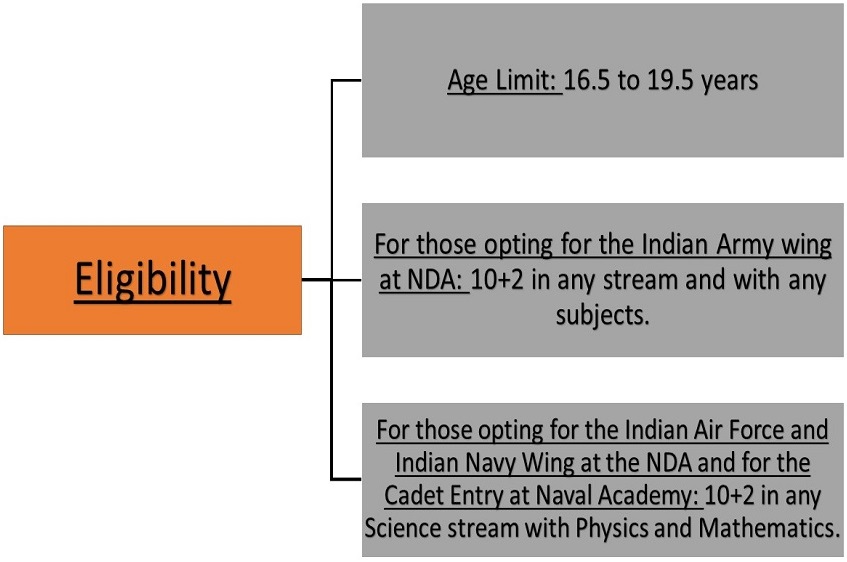
- CMS (Combined Medical Services Examination): Combined Medical Services (CMS) Exam is conducted by UPSC each year to recruit the candidates for the posts of the following categories:
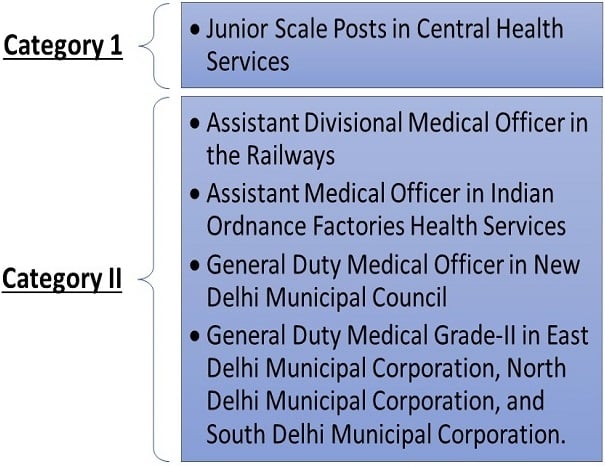
- CAPF (Central Armed Police Force): This UPSC CAPF examination is conducted for recruiting Assistant Commandant Officers (Group A – Class I Gazetted) for the following 7 posts.
- Assam Rifles (AR)
- Border Security Force (BSF)
- Central Industrial Security Force (CISF)
- Central Reserve Police Force (CRPF)
- Indo Tibetan Border Police (ITBP)
- National Security Guard (NSG)
- Sashastra Seema Bal (SSB)
- UPSC SCRA (Special Class Railway Apprentice): This Special Class Railway Apprentice (SCRA) exam, conducted by UPSC is an entry ticket for those who want to study mechanical engineering at the Indian Railway Institute of Mechanical and Electrical Engineering. You will be eligible to appear in this exam if you have completed 10 + 2 from a recognized board.
- CDS (Combined Defence Services Examination): The UPSC conducts CDS exam twice a year for recruiting candidates into the Indian Military Academy, Officers Training Academy, Indian Naval Academy, and Indian Air Force Academy.
.
UPSC Exam – Age Limit
| Categories | UPSC Exam Age Limit |
| General | 21-32 years |
| OBS | 21-35 years |
| SC/ST | 21-37 years |
| Defense Service Personnel | 21-35 years |
| Ex-Servicemen | 21-37 years |
| General PWD | 21-35 years |
| OBC PWD | 21-38 years |
| SC/ST PWD | 21-40 years |
However, the following are some of the age relaxations of some years for some reserved categories:
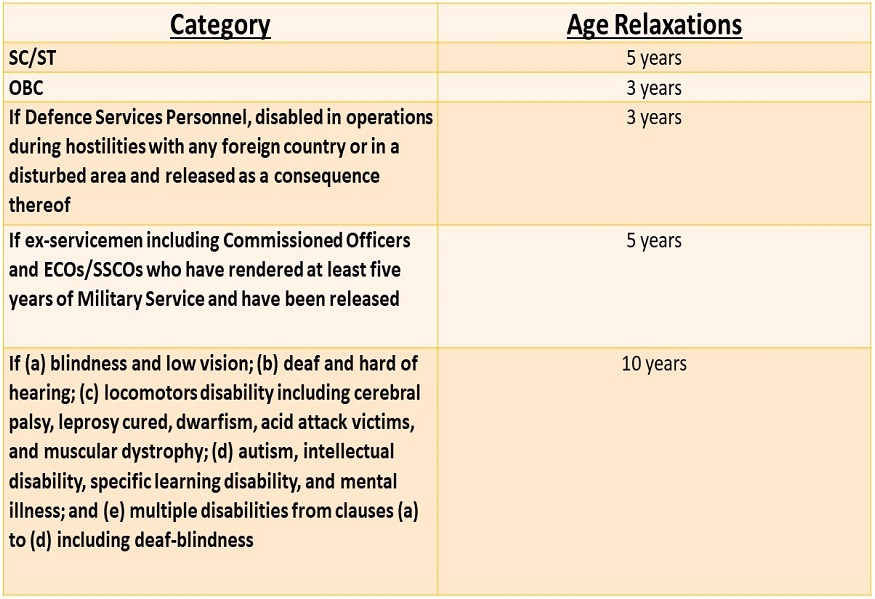
UPSC Exam – Admit Card
The admit card for the UPSC exam is not sent by post. Thus, you will have to download them from the official UPSC website and will have to take the printout. Following is the procedure for downloading the admit card:
- Visit E- Admit Cards | UPSC
- Enter roll number or the registration ID, you can now download your admit card.
- If you are unable to download to find the admit card, you are advised to check the notice issued by UPSC stating the names of the candidates whose applications have been rejected because of fictitious fees payment.
.
Final Words
Does that give you some clarity now? The USPC exam requires intense dedication and luck to succeed. So, if you want to clear the UPSC exam, you need to prepare accordingly. However, we recommend you to not rush through career decisions. If you are struggling with your career decisions, we are just a call away. iDreamCareer has helped millions of young minds by planning their future careers. We work with several state governments and all CBSE schools in India, so we will not disappoint you. Talk to us, now!
Also, check:
- Calendar | UPSC
- E- Admit Cards | UPSC
- Top 20 Government Exams after Graduation for Jobs
- 20 Most Beneficial Exams to get Government Jobs
- UPSC Syllabus: Prelims + Mains, Books, & Optional Subjects
- The Ultimate Guide on How to Prepare for IAS: Top 11 Tips
.
.
.
FAQs
What are the different UPSC exams?
UPSC is responsible for conducting exams for recruiting into Central Services, All India Services, and Defence Services for Group A and Group B posts. Following are the exams conducted by UPSC:
– Civil Services Examination
– Engineering Services Examination (IES)
– Combined Defence Services Examination (CDSE)
– National Defence Academy Examination (NDA)
– Naval Academy Examination
– Combined Medical Services Examination
– Special Class Railway Apprentice (SCRA)
– Indian Economic Service/Indian Statistical Service Examination
– Geologists’ Examination (GE)
– Central Armed Police Forces (AC)
How are attempts calculated in the UPSC exam?
An attempt is counted only when you appear for the prelims examination. For example, if you have filled the UPSC exam form and do not appear in the UPSC examination, your attempt will not be counted.
Is the UPSC exam conducted twice a year?
No, all UPSC exams are conducted only once a year.
What is the basic educational qualification for the UPSC exam?
The basic educational qualification for any UPSC exam is an undergraduate degree from a recognized university. However, special ones like those for engineering/medical will require a BTech/MBBS, obviously!
.
Anushree has 4+ years of experience in the career counseling industry as a Content Writer. She has also worked as a Social Media Marketing Expert for a startup and Content Quality Analyst for Publishing and E-learning Industry. She has done her Master’s in Commerce and PGDM in Finance & Trade and Marketing & HR, but she is currently following her passion for writing.
– Экспертиза UPSC CMS –
UPSC, UPSC CMS Examination 2022: в этой статье я буду объясняя подробно об экзамене UPSC CMS 2022. Я помогу вам во всем разобраться, сделав свои объяснения очень простыми. Все, что вам нужно сделать, это оставаться сосредоточенным и читать дальше.
Экзамен UPSC CMS — Комиссия Союза государственных служб (UPSC) пригласила заявки на набор 710 вакансий путем проведения Комбинированного экзамена на медицинские услуги (CMSE) 2022.
UPSC ежегодно проводит Комбинированную медицинскую экспертизу (CMS), чтобы набирать медицинских выпускников в различные организации и службы центрального правительства.
Осмотры комбинированных медицинских услуг (CMS) проводятся в соответствии с Правилами, опубликованными Министерством здравоохранения и благосостояния семьи в Gazette of India. Подходящие кандидаты могут подать заявку онлайн на сайте www.upsconline.nic.in.
UPSC CMS 2022 Важные даты
➢ Выпуск Уведомления состоится 6 апреля 2022 г.
➢ Доступность формы заявки начнется 6 апреля 2022 г.
➢ Последний день для заполнения анкеты – 26 апреля 2022 г.
➢ Входная карта будет доступна к июню 2022 г.
➢ Дата компьютерного экзамена приходится на 17 июля 2022 года.
➢ Результаты CBE будут доступны к августу 2022 г.
Экзамен UPSC CMS 2022 – обновления набора сотрудников UPSC
➢ Помощник участкового врача железных дорог – Сообщения 450
➢ Помощник врача в Службе здравоохранения индийских артиллерийских заводов – 26 пост
➢ Младшие должности в центральных службах здравоохранения – Сообщения 216
➢ Медицинский работник общего назначения в муниципальном совете Нью-Дели – Сообщения 02
➢ Медицинская служба общего профиля Gr.-II в Муниципальной корпорации Востока, Севера и Юга Дели – Сообщения 16
Процесс отбора экзаменов UPSC CMS
Кандидаты будут отобраны на основе следующего процесса
➢ Письменный экзамен
➢ Интервью/Тест личности.
➢ Тест физических и медицинских стандартов.
UPSC Требования к набору персонала
Идеальные кандидаты не должны быть старше тридцати двух (32) лет и должны обладать как минимум:
➢ МББС
➢ Умение работать с основными компьютерными приложениями (например, Word, Excel, PowerPoint и т. д.)
➢ Географическая мобильность внутри и за пределами Индии.
➢ Профессиональная квалификация/опыт работы в эффективных компаниях.
➢ И мужчина, и женщина в порядке
ВАЖНОЕ ЗАМЕЧАНИЕ. Экзамен UPSC CMS 2022 в настоящее время недоступен. Пожалуйста, ЗАКАЖИТЕ эту страницу для последних обновлений.
Схема исследования UPSC CMS 2022 | Как UPSC CMS проведет экзамены
Письменный экзамен будет проводиться в двух частях, таких как Части I и Часть II, соответственно.
Часть I: Часть I будет компьютерным тестом, состоящим из двух работ. Каждая работа будет состоять максимум из 250 баллов, а продолжительность, указанная для каждой статьи, составляет 2 часа.
Часть II: Часть II будет личностным тестом, состоящим из 100 баллов.
К сдаче части II экзамена допускаются только те кандидаты, которые прошли первую часть экзамена.
ЗАМЕТКА: Для кандидатов, принадлежащих к категориям SC/ST/PH/Female – регистрационный сбор не требуется.
Экзамен UPSC CMS 2022 | Как подать заявку на подбор персонала
Подходящие кандидаты могут подать заявку онлайн через веб-сайт www.upsconline.nic.in
➢ Сначала войдите через веб-сайт upsconline.nic.in.
➢ Затем нажмите «Онлайн-заявка на различные экзамены UPSC».
➢ Нажмите «Часть — I/Часть — II Регистрация» и прочтите полную информацию.
➢ Теперь заполните все необходимые данные, такие как возраст, квалификация, опыт и т. д.
➢ Теперь кандидаты должны загружать документы в Модуль загрузки документов
➢ После загрузки фотографии и подписи просмотрите форму ORA и внимательно проверьте детали.
➢Теперь нажмите кнопку «Отправить» и оплатите регистрационные сборы онлайн или офлайн.
➢ После заполнения неполных данных нажмите одну кнопку отправки.
➢ Теперь возьмите распечатки заявления, приложите заверенные копии всех документов и сохраните их для дальнейшего использования.
Если вам нужно, чтобы мы своевременно предоставили вам более актуальную информацию об экзамене UPSC CMS 2020, укажите свой номер телефона и адрес электронной почты в поле для комментариев ниже. Кроме того, задавайте любые вопросы, касающиеся этого руководства.
Мы считаем, что эта статья была интересной, если да, используйте нашу кнопку «Поделиться» ниже, чтобы сообщить друзьям и родственникам через Facebook, Twitter или Google+.
CSN Team.
Отличные задачки для тренировки мозга.
Собравшись дома всей семьёй после непростого и суетного дня, самое время расслабиться и отдохнуть в дружной компании. Можно, например, провести небольшую разминку для мозга, попытавшись решить 16 небольших задачек на внимательность и логику, которые мы собрали для наших читателей.
1. Простая арифметика
Этот пример на экзамене UPSC смог решить только один человек.
2. Логическая задачка
Задачка для первоклассника…
3. Тест на внимательность
Найдите мышку.
4. Найдите ошибку
90% людей не могут найти ошибку в этом тесте.
5. Тренировка для глаз
Найдите сердце… А когда найдете, пощупайте бьется ли ваше!
6. Найдите ребенка
Простое задание для опытных родителей.
7. Найдите 7 отличий
Старайтесь не концентрироваться на одной точке.
8. Найди кота
Среди собак затесался чужак. Найдите его!
9. Найди кота. Следующий уровень
Задача усложнилась. Ищем кота-шпиона в cтепи.
10. Загадка
Загадка для взрослых.
11. Абстрактное мышление
Сверху имеем треугольник, который состоит из нескольких частей. На нижнем рисунке те же фигуры, но перевернутые. Откуда взялась пустая клетка?
12. Логическая задача
Какое время должны показывать часы под номером 5, чтобы продолжить определенную последовательность.
13. Внимание!
Снова кот потерялся.
14. Найди отличия
Каждый снеговик отличается чем-то одним от остальных.
15. Высшая математика
Сначала решите уравнения, а затем найдете эти числа (ответы) в таблице цифр. Очередность цифр должна идти по прямой, можно по диагонали, справа налево, снизу вверх и наоборот.
16. Чтение с препятствиями
Прочитайте текст.
И в заключение — Логическая задачка, которая предлагалась в качестве теста работникам советских спецслужб. Проверьте, а вас бы взяли в спецагенты.









